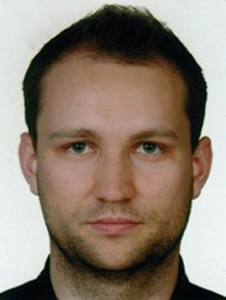Program Information
Dose Distribution Verification in a Moving Target Using Moving Platform and 2D Diode Array
S Adamczyk*, M Adamczyk, T Piotrowski, Greater Poland Cancer Centre, Poznan, Poland
SU-E-T-223 Sunday 3:00PM - 6:00PM Room: Exhibit HallPurpose:
The aim of this study was to carry out a dosimetric verification of statically planned sliding window IMRT for respiratory-like moving targets using 2D diode array.
Methods:
Ten 5-field IMRT plans for mobile lung tumors were created. The target volumes were delineated on the free breathing CT scans. Three tumor motion trajectories have been simulated, with the largest movement amplitude in cranio-caudal direction of 4 mm, 6 mm and 8 mm, and breathing periods of 4 s.
The breathing motion was simulated using the motion kernels derived from the literature data. The moving platform (MotionSim XY/4D-Sun Nuclear) with the diode array MapCHECK 2 (Sun Nuclear) was used.
The evaluation was based on the Gamma analysis (3mm, 3%). The scoring parameter was the percentage of the field area (defined by the jaws plus 1 cm margin) resulting with γ < 1 (%score).
Results:
The average score for static target equals 99.43% (γ=0.330). When the breathing trajectory with maximum amplitude of 4 mm was applied we have found an average score of 97.81% (γ=0.386), which fitted well to the plan acceptance criteria (%score > 95% and average gamma < 0.6). For 6 mm amplitude average score was 94.18% (γ=0.468). However when 8 mm movement of target was applied we have observed significant change in analysed parameters: average score and γ of 83.68% and 0.572, respectively.
Conclusion:
This study showed that statically planned nonuniform dose distribution could cause the tumor under-dosage due to interplay effect. It is therefore crucial to verify amplitude of individual patient breathing motion trajectory and take it into account by increased margins.
For maximal amplitudes of breathing trajectory below 4 mm the disagreement between planned and delivered dose distribution can be neglected. Whereas respiratory motion with amplitude above 6 mm leads to significant changes in delivered dose distribution.
Contact Email:


